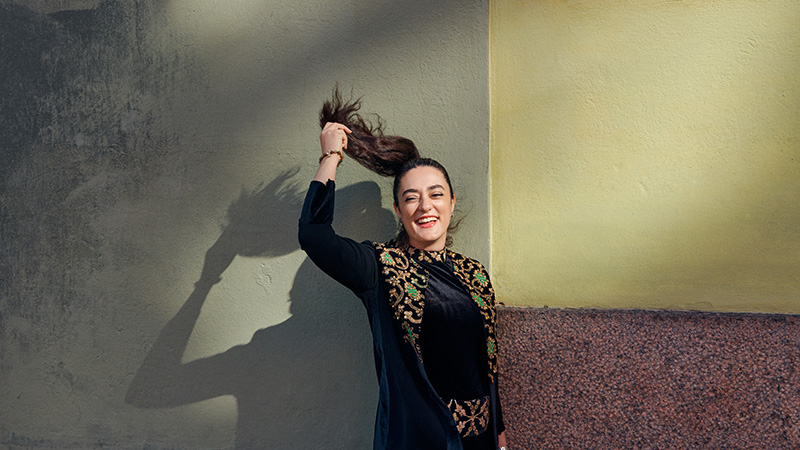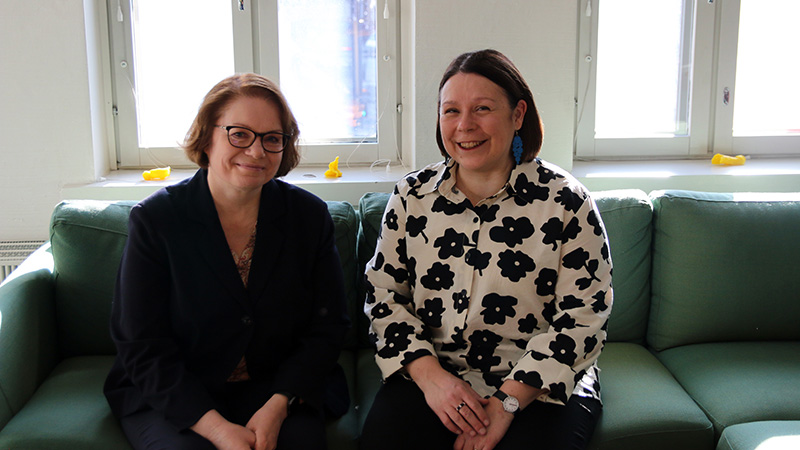Uniarts Helsinki’s new curriculum takes students’ wellbeing and individual study paths into consideration
For the first time during the university’s ten-year history, Uniarts Helsinki will introduce a joint curriculum, which will be valid until 2030. The curricula include joint general studies that all students complete as part of their bachelor’s degrees.

There are continuously changes going in the labour market and in society, which requires Uniarts Helsinki to react accordingly when planning the content of studies. With this in mind, the new curriculum will support students’ continuous learning and reflect the university’s current strategy. Five cross-cutting themes emerged from Uniarts Helsinki’s strategy for the curriculum: digitalisation, ecological sustainability, wellbeing, international activities and research orientation. The planning of teaching takes place each academic year, which makes it possible to react swiftly to the changes in the operating environment and in the arts sector.
Student wellbeing and equality are put front and centre
Student wellbeing was put front and centre in the preparation of the curriculum, along with course workload planning, which students have commented on over the years in their feedback to the university. Students and the Student Union have also played a central role in the curriculum reform work so that students’ needs will be taken into account in the planning of teaching. The goal is to make the course workload calculation simpler with the help of various means, including new workload estimation tools that help in calculating a suitable amount of workload for courses in proportion to the number of credits that are awarded.
“The curriculum reform led to a clearer structure for studies in all our artistic fields, a new module of elective studies to promote individual orientations as well as a more standardised way of determining the number of credits for courses” says Kirsti Rasehorn, project manager for the curriculum work.
In the future, the degree structure of students will include even more joint studies where students can get to know each other across academy and programme lines. There will be specific weeks dedicated to joint studies, which makes it easier to choose and schedule joint studies and also creates new possibilities for collaboration across the university. Each academic year, there will also be a collaboration project between the academies combining various fields of art.
Another central goal in the curriculum work was the promotion of equality among students, which involved the development of the joint selection of language and communication studies and studies in career skills.
“We have promoted equality in these studies by standardising the academies’ course selection and number of credits awarded for studies. Good examples of how equality is promoted are new innovations like the Learn Finnish by Singing course, where students learn Finnish skills by singing,” Rasehorn says.
Working life orientation steers teaching
The new curriculum is also even more strongly based on working life orientation and cooperation with the arts sector. To strengthen students’ career skills, there is a new compulsory study unit called Art, Work and Sustainability included as general studies for students of all study fields. Its central content themes include career skills, ecological sustainability and future thinking.
“Before, studies in career skills weren’t part of students’ compulsory studies, which meant that graduates had very uneven career skills, and they had a varying degree of knowledge of statutory rights and obligations related to their professional activities, for example,” Rector Marjo Kaartinen explains.
Kaartinen also finds it important that alumni and key stakeholders get to participate in the planning of content for the new curricula, which gives the university’s teaching a genuine working life orientation.
“It’s important that studies respond to the demands of the arts sector in each time that we’re living in so that students are able to work in a meaningful way in the ever-changing operating environment,” Kaartinen adds.
